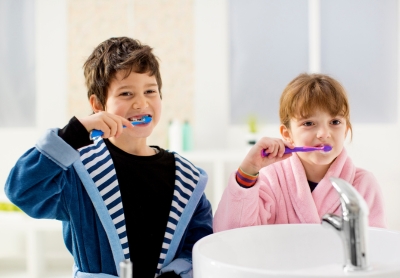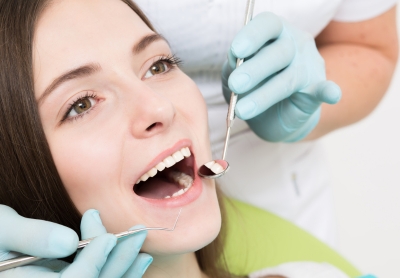


Both natural teeth and teeth with restorations survive best in an oral environment that is clean and where the intake of harmful foods is controlled. Our program is designed to help prevent new cavities, preserve teeth that have been restored and manage periodontal disease. At the initial visit, oral hygiene instructions are reviewed and are reinforced at subsequent recall visits.
The following are helpful recommendations:

Proper brushing is essential for cleaning teeth and gums effectively. It is important to brush your teeth multiple times a day, as plaque builds up on the teeth throughout the day as you eat food. Use a toothbrush with soft, nylon, round-ended bristles that will not scratch and irritate teeth or damage gums. Gently brush the outer tooth surfaces of 2-3 teeth using a vibrating back & forth rolling motion.
Move brush to the next group of 2-3 teeth and repeat. Maintain a 45-degree angle with bristles contacting the tooth surface and gumline. Gently brush using back, forth, and rolling motion along all of the inner tooth surfaces. Tilt the brush vertically behind the front teeth. Make several up & down strokes using the front half of the brush. Place the brush against the biting surface of the teeth & use a gentle back & forth scrubbing motion. Brush the tongue from back to front to remove odor-producing bacteria. Remember to replace your toothbrush every three to four months. Researchers have established that thousands of microbes grow on toothbrush bristles and handles. Most are harmless, but others can cause cold and flu viruses, the herpes virus that causes cold sores, and bacteria that can cause periodontal infections.

Flossing is a very important daily step in maintaining good oral hygiene. Dental floss is a thin string that can be waxed, unwaxed, plain, or flavored. The technique can be awkward to do at first, but with practice, flossing will become easier and together with brushing, should be a part of one’s daily routine.
The proper technique used in flossing is to wrap the floss on the middle fingers of both hands and then hold it with the fore finger and thumb, keeping the length of the floss short, so that it is easier to maneuver on the teeth. plaque that builds up around and under the gums If bleeding occurs when flossing, is because inflammation of the gums is present, continual flossing will help to prevent and or minimize the bleeding This motion will remove food particles and more importantly, it will remove the plaque that builds up. Flossing may cause some minor bleeding at first but after a few times, the bleeding should stop. Flossing should be done at least once a day, in order to keep your teeth and gums healthy.

Fluoride is a vital mineral that strengthens tooth enamel and helps prevent tooth decay. It does not occur naturally in food or water sources, which is why it is important that you receive a fluoride treatment regularly or use a fluoride mouth wash. Regular fluoride treatments at your dental office, applied until the age of 18, further enhance enamel strength and cavity resistance.
During these treatments, concentrated fluoride is applied and should remain on the teeth for one minute, without rinsing for at least 30 minutes. This process aids in the remineralization of damaged tooth structures caused by decay, ensuring healthier and stronger teeth.

Dental sealants are thin plastic coatings applied to the chewing surfaces of children’s back teeth to protect them from cavities. These surfaces have pits and grooves where food and germs can get trapped, making them difficult to clean with regular toothbrushes.
Sealants fill in these grooves, creating a barrier that prevents food from getting stuck, reducing the risk of decay. Applying sealants on a child’s permanent molars as soon as they come in is crucial in preventing tooth decay, along with regular dental check-ups, daily brushing and flossing, and drinking fluoridated water for optimal oral health.

It is important to conduct thorough oral hygiene at home twice daily utilizing tooth brushing with a fluoride antibacterial toothpaste and flossing to remove food debris and plaque on teeth, bridgework and implants, and brushing the tongue to remove odor-causing bacteria.
A published study reported that tongue and tooth brushing in combination with dental flossing significantly decreased bleeding of the gum tissue over a two week period of time as well as reduced bad breath.
Another clinical study conducted by the University of Buffalo dental researchers confirmed that brushing twice a day with an antibacterial toothpaste and using a tooth brush with a tongue cleaner can eliminate bad breath.
